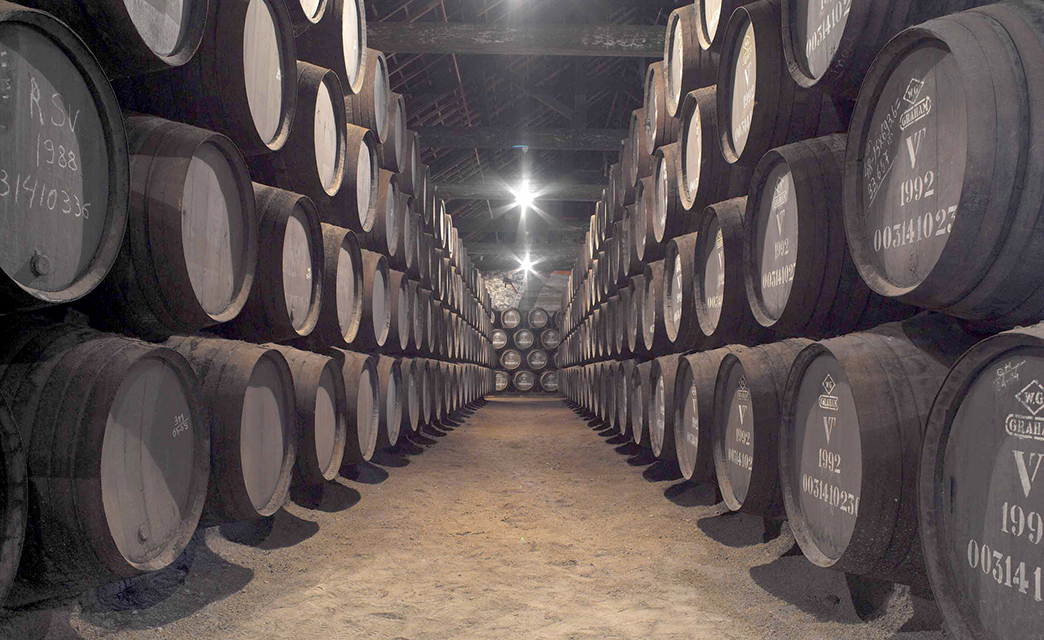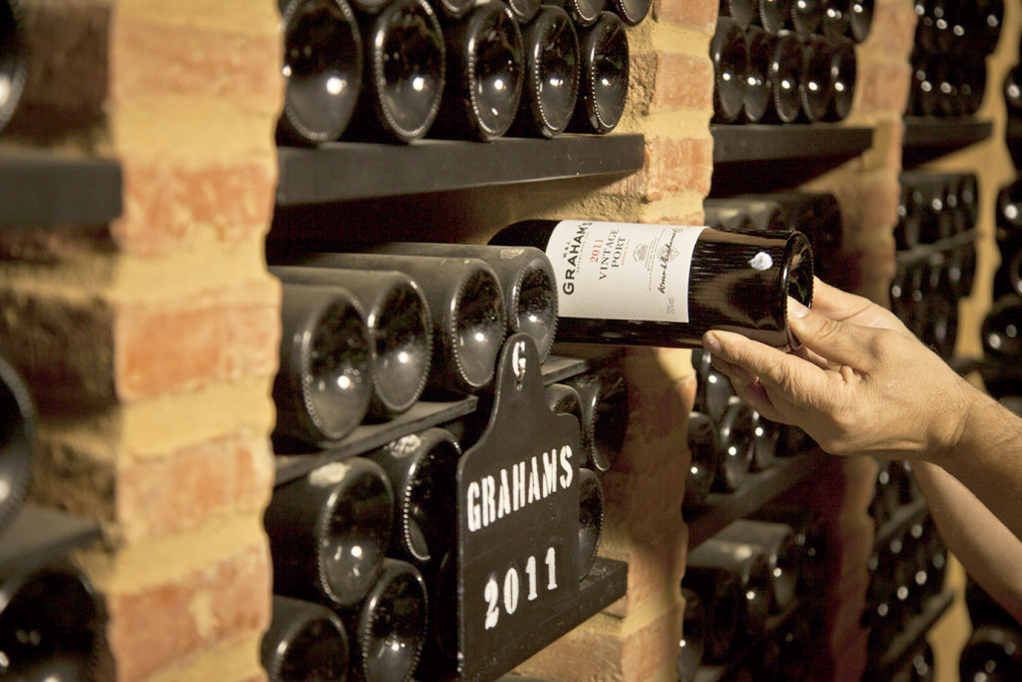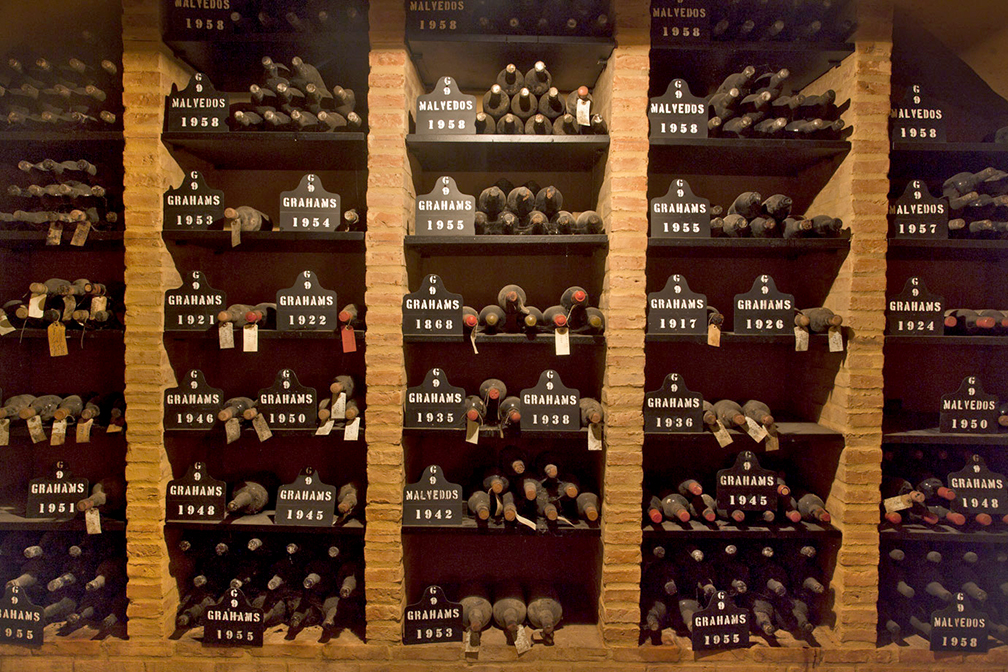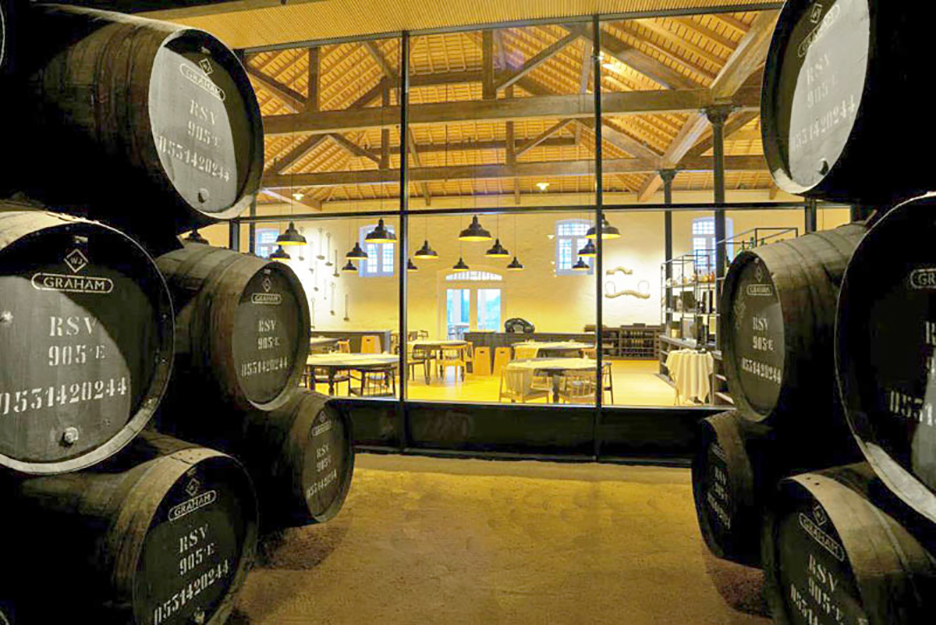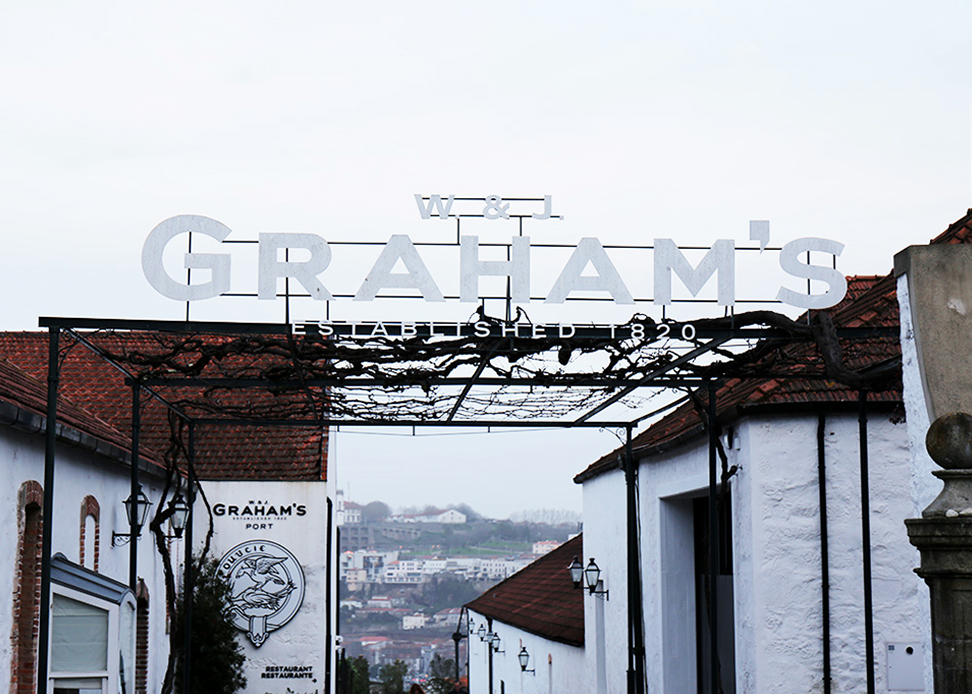Deep ruby color; blackberry, cassis, eucalyptus, mint on the nose; plum, liquorice, chocolate on the palate.
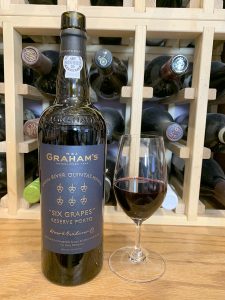
Medium-sweet—66.6 g/L residual sugar. Good balancing acidity, a vital component of a sweet wine. Made from grapes grown near two rivers, considered the ideal locations for porto grape growing. One-third of the blend comes from Quinta Tua’s “Old Terraces” harvested in 2014. One-third from Quinta Tua’s “Old Terraces” harvested in 2015. One-third from Malvedos “Vinha dos Barcos” harvested in 2015. It was vinified in the lagares at Malvedos to achieve Graham’s signature house style. 20% ABV
The Tua River is one of the main tributaries of the Douro River. Downstream, the Vinha dos Barcos—named for the boats that carry wines 500 miles down the Douro to Porto, Portugal—provides the touriga franca grapes. Charles Symington and Henry Shotton are the winemakers.
Brothers William and John Graham established their firm in northwest Portugal to trade in textiles. In 1820, they accepted 27 barrels of porto (port wine) in payment upon a debt. Shortly thereafter, they decided to devote all their energies to making port wine. W. & J. Graham’s became one of the great port houses.

In 1970, the Symington family, who had produced porto since 1882, purchased the winery. The purchase represented an interesting twist since a century before the founder of Symington, A.J. Symington, began his port career at Graham’s. The Symingtons now control Cockburn’s, Graham’s, Warre’s, Dow’s, Smith Woodhouse, Gould Campbell, Quarles Harris, and Martinez—the world’s strongest porto portfolio. They have the largest vineyard ownership in the Douro.
The six grapes label does not mean six different grapes. The website explains: “In order to identify the different grades of wine leaving the Douro, the barrels would typically be marked with coded symbols describing the type of wine they contained. When the barrels were received in Porto, the requisite symbol and quantity would be entered into large ledgers known as ‘lot books’.
“Graham’s adopted its own set of codes, with geometric symbols, letters and other designs describing the style of the maturing wines and the final blends ready for shipment to overseas customers. But the very best wines from the very best vineyards, of a quality that could possibly be considered as candidates for a bottling as Graham’s Vintage Port, were designated ‘Six Grapes’, being the highest of six possible classifications depicted by the appropriate number of grape bunches.”
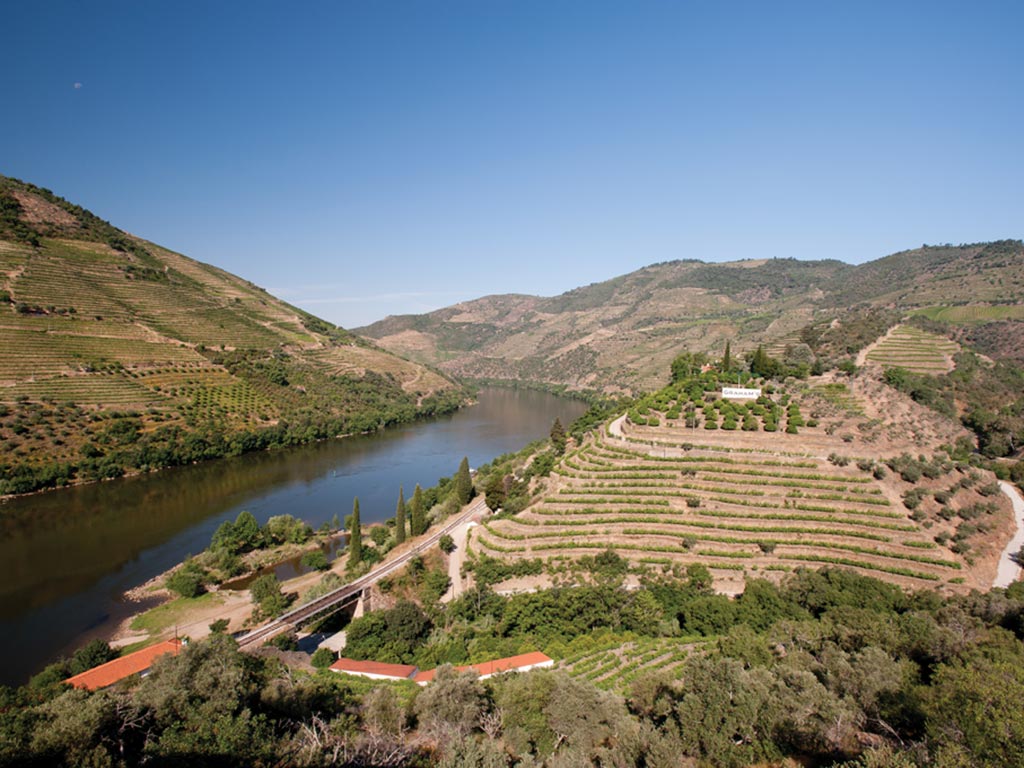
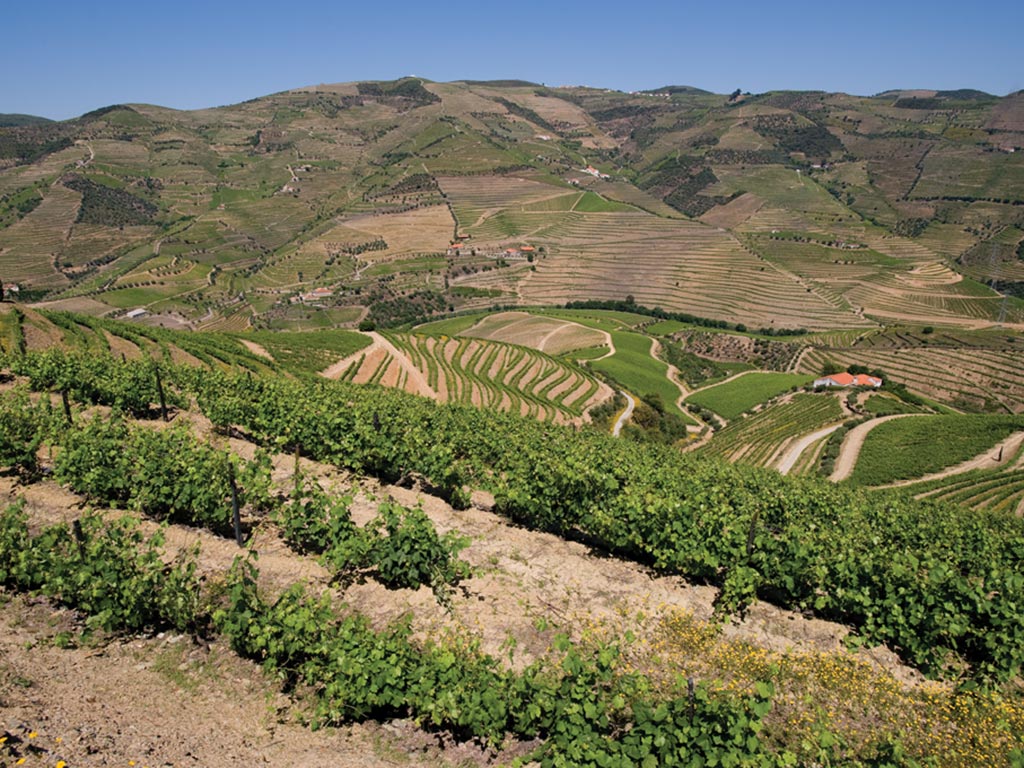
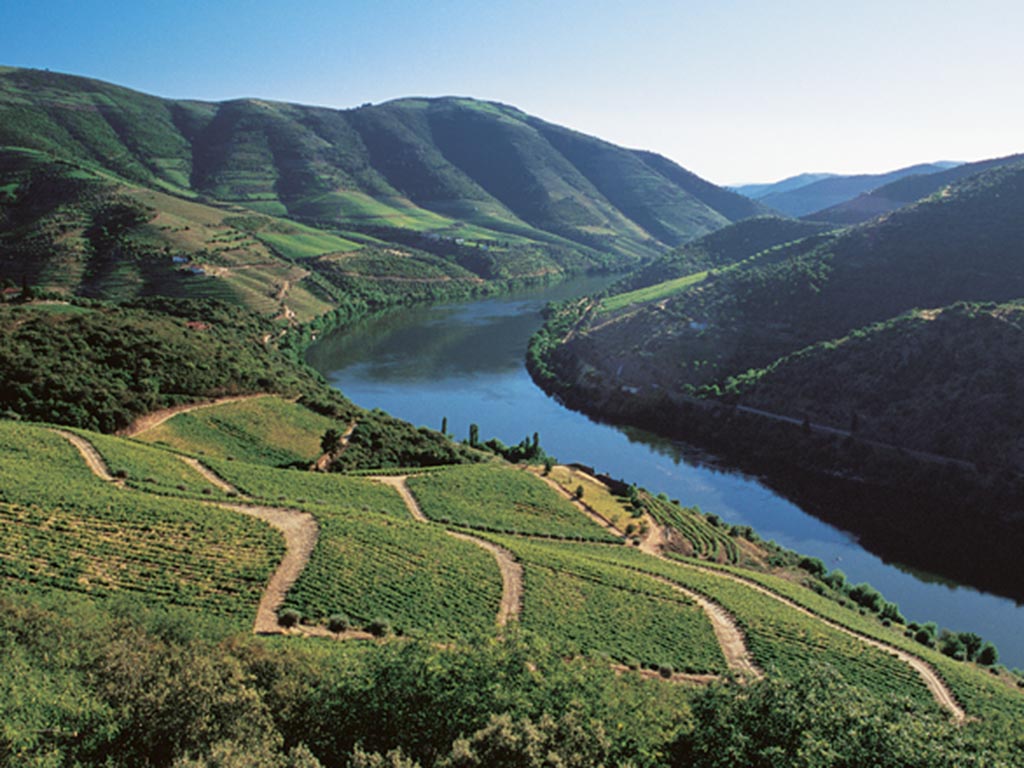
People unfortunately pigeonhole porto as a winter wine to be sipped around a blazing fireplace. That is wrong. Porto is an all-the-year libation. Portos usually are served chilled, which knocks down the heat on the finish and makes them a nice warm weather drink. Graham’s suggests enjoying this at a summer evening picnic paired with s’mores and a campfire under starry skies. Sounds wonderful. Sounds decadently delicious.
This is sealed with a T-cap and, because it is a fortified wine, it can remain fresh after opening for two to four months if stored in a cool, dark place. Graham’s ports traditionally are sweeter and more fruit-driven than others, and this qualifies. They also are sensationally smooth on the palate, delicious, and they virtually command you to take another sip—although at 20% ABV, some resistance is advised somewhere down the line.
W. & J. Graham’s Six Grapes Special River Quintas Edition is classic porto from a premier maker. The Symington family dominates Porto and Madeira production in Portugal because they are so good at it. Enjoy this by itself after dinner as a dessert wine; serve with rich, nutty, or dark chocolate desserts; works variety of cheeses, especially blue cheese. $42
